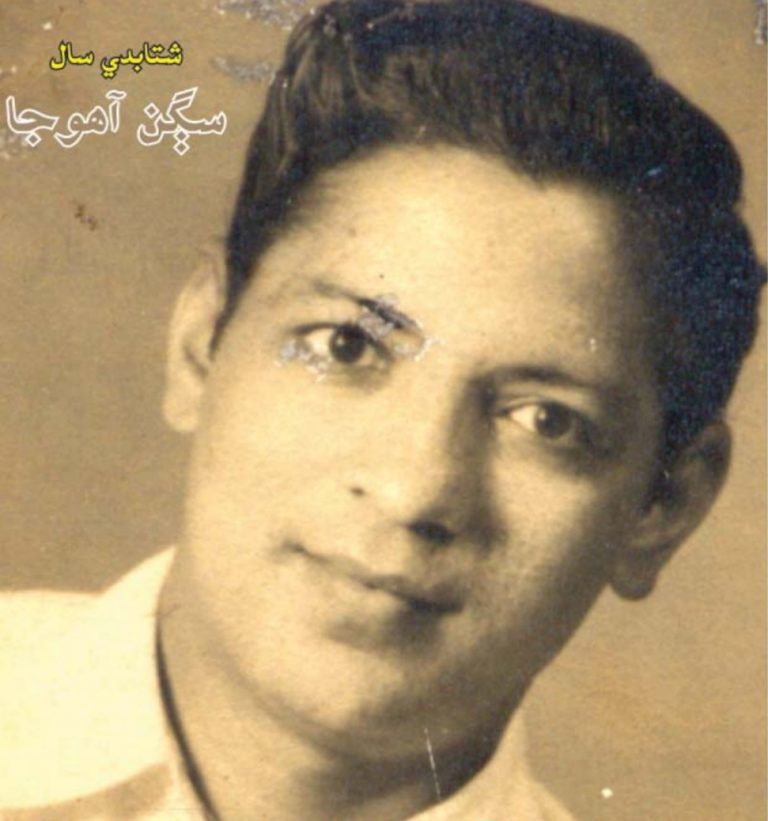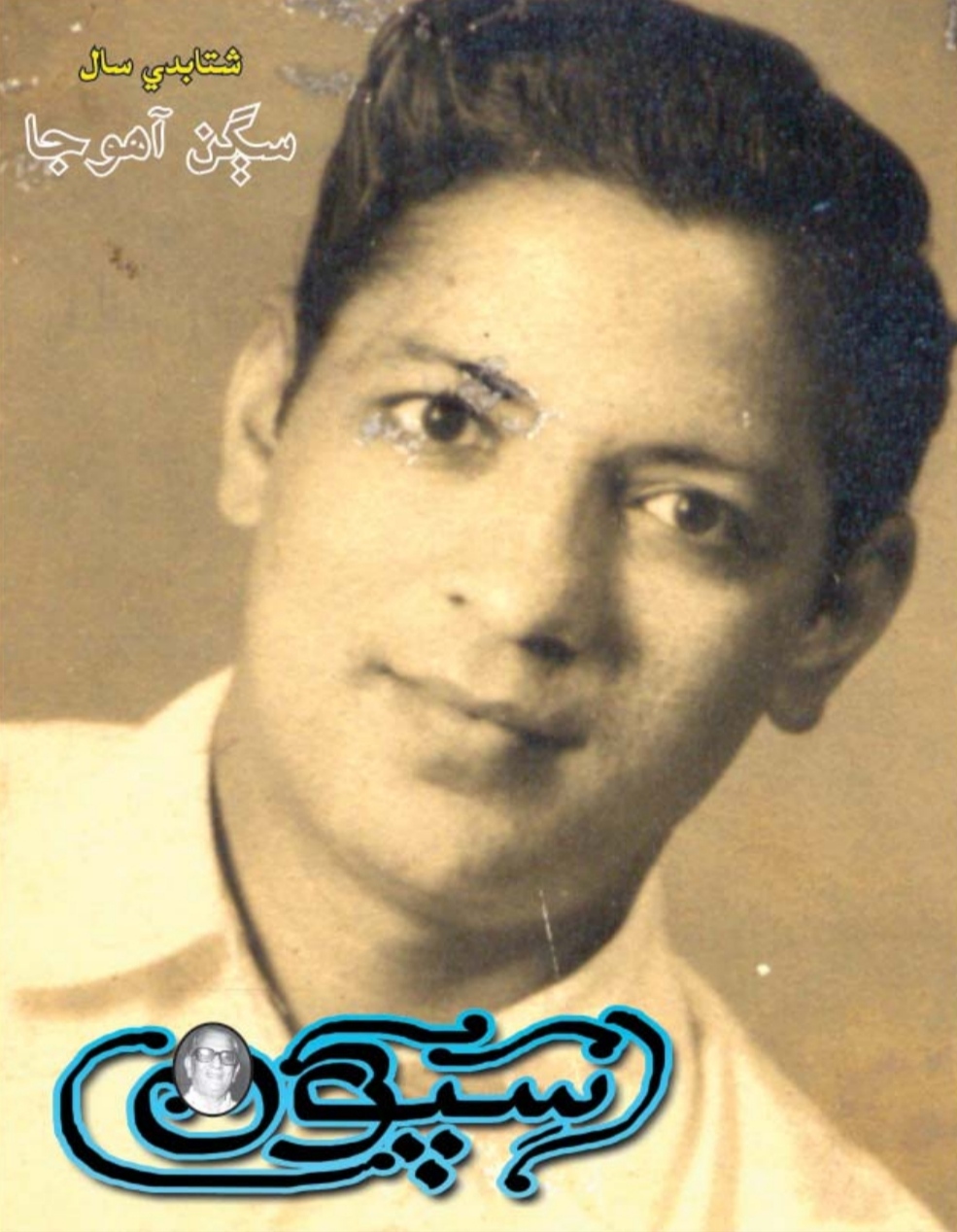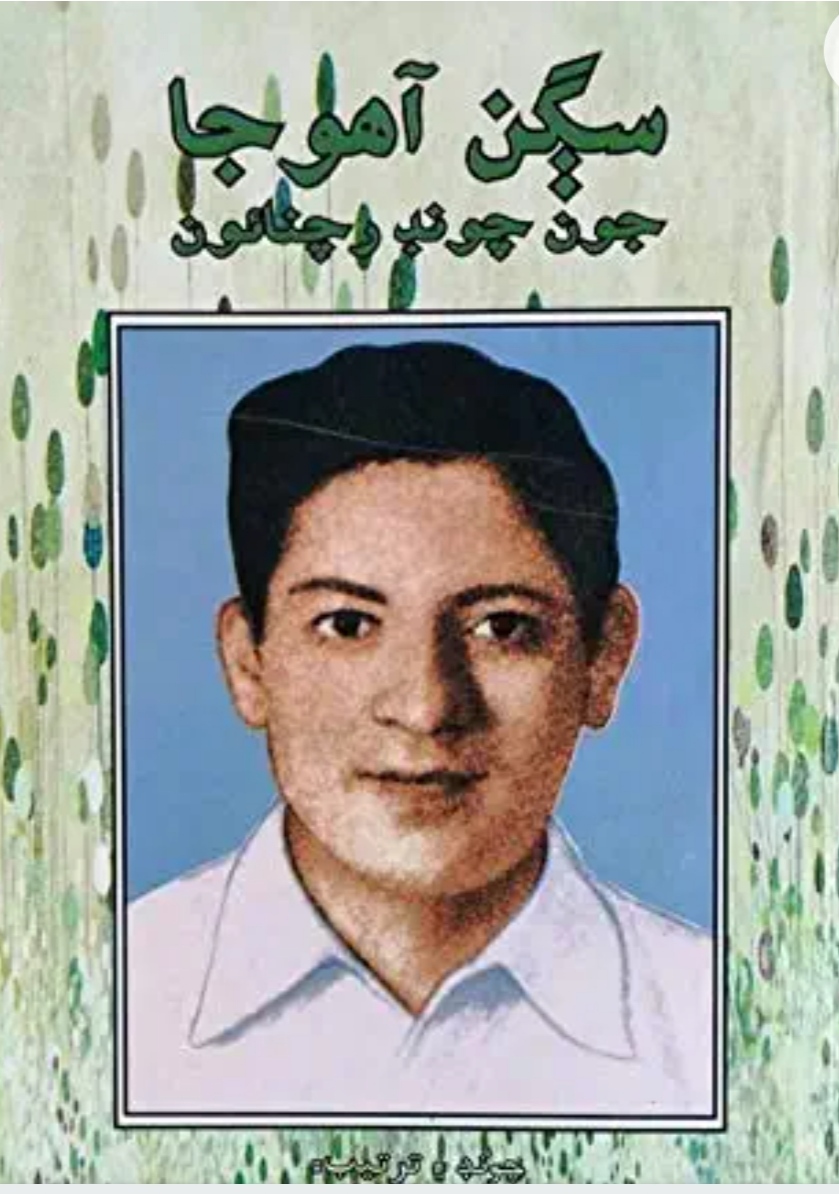
Sugan Ahuja was greatly influenced and inspired by Socialist Marxist school of thought, and depicted the life of working class people in his poetry and short stories.
Sindh Courier
Late Sugan Ahuja, a multi-faceted literary personality in Sindhi Community, is being remembered today (December 1, 2021) on his 100th birthday. Sugan, a progressive writer, was greatly influenced and inspired by socialist Marxist school of thought, and depicted the life of working class people in his stories. He was basically a poet but also left behind memorable short stories enriching the Sindhi literature.
On his 100th birthday, the Sindhi quarterly magazine of India has published a special edition to pay homage to great writer while Sahitiya Academy held ‘Sugan Ahuja Birth Centenary Symposium on Zoom which was participated by writers from Mumbai, Kolkata and Delhi. The symposium was attended by several Sindhis from around the world.
Education, Early Life and Struggle for Survival
Renowned poet, short story writer and literary critic, Sugan Ahuja was born in Sukkur Sindh on December 1, 1921 to Shri Naomal, a timber merchant. After having passed his matriculation in 1937, he got admission in Dayaram Jethmal (D.J.) Sindh College in Karachi and did graduation in English literature.
In the year 1941, Sugan went back to Sukkur where he married to Smt. Dadan Bhai. He became father of a son in February 1942 but the child passed away the same year in December but with grace of God another son was born to him in December 1943, which made him so happy that he wrote a poem, considering the newborn as return of first son.

Like other Sindhis, his family too had to migrate to India as a result of partition in 1947. The well off family of Sukkur had to spend miserable times in refugee camp. First, they went to Lalitpur in Madhya Pradesh but had to move to the Kalyan Camp. His elders attempted operating private buses, but sustained losses. Sugan too opened a small shop and started wholesale business of candies but failed. He had no way but to find a job having no luck in business. First, he found a part-time job of a cashier at West End Hotel, and then worked as a pat-time school teacher and lecturer. During last days of his life, Sugan was employed by a private company at a monthly salary of Rs.200/-.
Sugan Ahuja suffered a severe attack of paralysis due to high blood pressure while working at office on December 14, 1964. He was rushed to St, George Hospital from where he was shifted to a Mumbai hospital after half a month. Sugan remained under treatment there till February 1965 when he was allowed to go home. Sugan however couldn’t succeed in fight for life and breathed his last after 14 months on February 10, 1966 at the young age of 44 years. He had four sons – Amar, Partab, Sargam and Murli, and two daughters – Lata and Seema. His first two sons were born in Sindh.
Sugan Ahuja, who looked very young even at the age of 44, was a jolly person who bravely faced the hardships of life. For many years, he also suffered from infectious disease of eczema.
Literary Life
During his college life in Karachi, he took active part in literary activities along with Narayan Shyam, Gobind Malhi, Gobind Punjabi, Keerat Babani, Lekhu Tulsiani and other young writers and poets of that time. Due to vast study of literature, he was known as the ‘Mobile Encyclopedia’ among the college students.
He firmly believed that social changes could only be brought about by love and humbleness in human behavior rather than by force. He was against the self-publicity of writers. According to him ‘a writer must show honesty while writing’ and that ‘Art is not for life for life for the art’.
He began writing poetry since 1941 adopting the literary name ‘Sugan Lal Ahuja Aasi’ but later he gave up ‘Aasi’ (Sinful) on the advice of Gobind Malhi and was known as Sugan Ahuja. His poems were published in a magazine ‘Sindhu’ and the college magazine.
His poetry was greatly influenced by the independence movement and the slogans of revolution at that time. In 1945, he also translated Tagore’s famous poem ‘Leave this chanting, singing and telling of beads’.
 Sugan Ahuja started writing short stories from 1945 and his last short story was published in 198. During this period he authored only 12 stories – three of them in Sindh and rest of nine in India. His last story was ‘Ra’ab’, published in a magazine in 1958.
Sugan Ahuja started writing short stories from 1945 and his last short story was published in 198. During this period he authored only 12 stories – three of them in Sindh and rest of nine in India. His last story was ‘Ra’ab’, published in a magazine in 1958.
He was also a recognized literary critic. His critical evaluation of the collection of poems of a great poet, late Narayan Shyam’s “Roop-Maya” is considered to be landmark in the field of new criticism in Sindhi literature. Sugan Ahuja’s novel “Kanwal Jaagi Uthya” (Lotus blossom), which was published posthumously in 1968, is considered to be his exceptional contribution to Sindhi literature.
He had a short stint in Journalism, when he took up Sub-Editorship of famous Sindhi Weekly ‘Hindvasi’, published from Mumbai.
His powerful and bold diction of poetry coupled with lyricism of thought, inspired his readers and influenced the youth in particular.
Sugan Ahuja was of the view that Sindhi classical poetry direly needs to be revived and for that he suggested writing poetry in classical forms and presenting the heroines of Bhittai in the present day poetry with a new color besides using folk characters in a symbolic way. He further suggested presenting Hindu and Muslim mythologies in Sindh poetry.
He also wrote literary columns especially for quarterly magazine ‘Koonj’.
Sugan Ahuja received some literary awards for his works.
Books
His published books include:
- ‘Aish Ji Kimat’ (The Price of Luxry), Short Stories, 1960.
- ‘Be Aag Jalan Tha Parwana’ (Moths burning without flame), 1967.
- ‘Arman’ (Unfulfilled Desire), Short Stories, 1968.
- ‘Pyari Chiza’ (A Thing of Beauty), Articles of Criticism & Poems, 1969.
- ‘Roop-Maya’ (Beauty Illusion), Critical evaluation of collection of Poems by prolific Poet, Narayan Shyam, 1962.
_______________________
Source: Sindhi Sangat and Magazine ‘Sipoon’ (Article by Sahib Bijani)